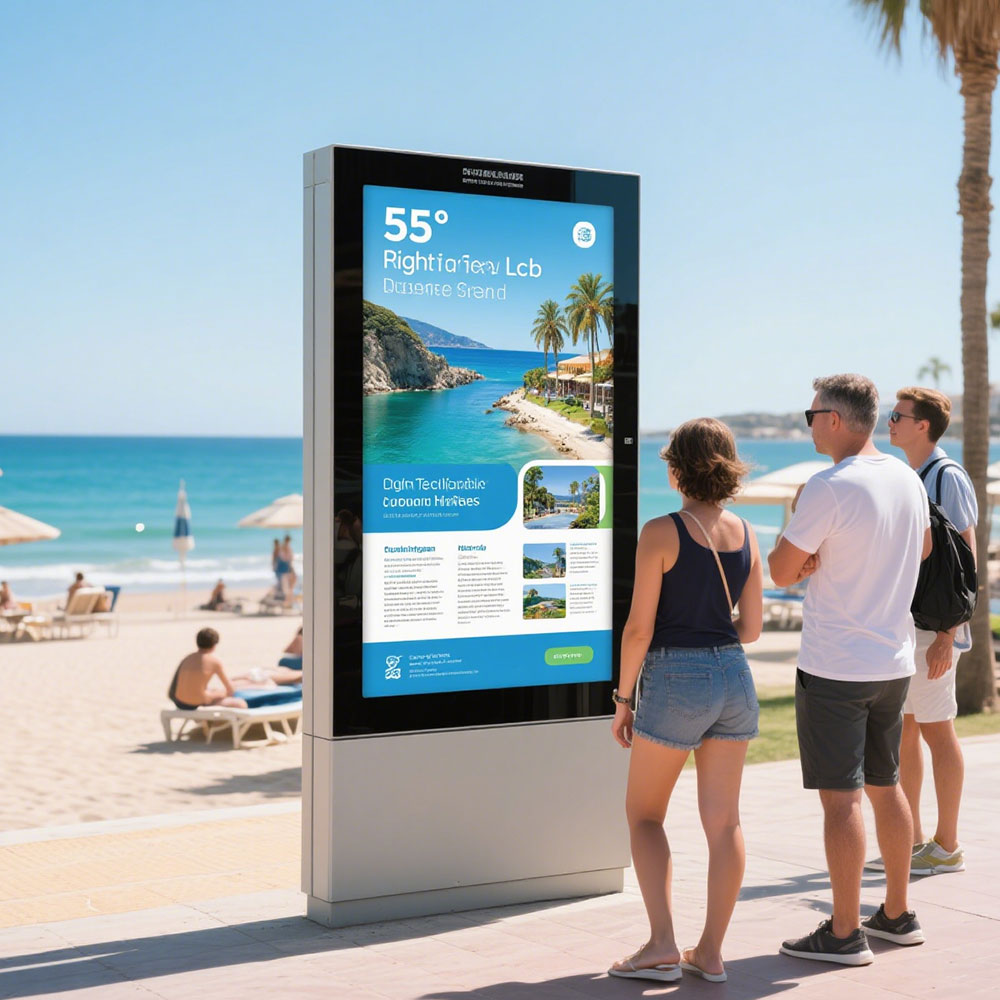- Home
- About Us
- Products
- News
- Video
- Contact
- Send Inquiry
Search
- Home
- About Us
- Products
- News
- Video
- Contact
- Send Inquiry

When it comes to outdoor digital signage, selecting the right LCD display is critical for ensuring long-term performance, visibility in varying lighting conditions, and resistance to environmental stressors. Whether you're installing a display for public transportation information, retail advertising, or industrial monitoring, understanding key technical specifications and real-world application requirements will make your investment both effective and sustainable.
First, brightness is one of the most important factors. Outdoor displays must be visible under direct sunlight, which can reach up to 10,000 lux or more. For optimal readability, an outdoor LCD should have a minimum brightness level of 5,000 nits—ideally between 7,000 and 10,000 nits. This ensures content remains sharp and legible even during peak daylight hours. In contrast, indoor displays typically require only 300–500 nits, making brightness a clear differentiator.
Second, consider the display’s environmental protection rating. The IP (Ingress Protection) rating indicates how well the unit resists dust and water intrusion. For outdoor use, look for at least an IP65 rating—a sealed design that prevents dust ingress and protects against water jets from any direction. Higher ratings like IP66 or IP68 provide even greater resilience, especially in coastal areas or regions with frequent rainstorms.

Another essential feature is the panel type. While standard TN (Twisted Nematic) panels are cost-effective, they offer limited viewing angles and color accuracy. IPS (In-Plane Switching) panels are preferred for outdoor applications due to wider viewing angles, better color reproduction, and improved consistency across different light conditions. OLED technology offers superior contrast and black levels but may not be ideal for all outdoor environments due to potential burn-in risks and higher power consumption.
Durability also depends on the frame material and internal cooling system. Aluminum frames are lightweight yet strong, offering good heat dissipation. Some high-end models include active cooling fans or passive heat sinks to prevent overheating in hot climates. Additionally, anti-glare coatings reduce reflections, enhancing readability without increasing brightness demands.
Power efficiency matters too—especially if the display will operate 24/7. Look for LED-backlit panels with adaptive brightness control that automatically adjusts based on ambient light. This not only saves energy but extends the lifespan of the display components.
Finally, remote management capabilities are crucial for maintenance and updates. Modern outdoor LCDs often support cloud-based software for scheduling content, monitoring device health, and receiving alerts about temperature or connectivity issues. This reduces downtime and ensures consistent operation across multiple locations.
By prioritizing brightness, IP rating, panel type, build quality, power efficiency, and smart features, businesses and municipalities can select an outdoor LCD display that delivers reliable performance year-round—even in the harshest weather. Investing in the right solution today leads to reduced operational costs, stronger audience engagement, and longer equipment life.